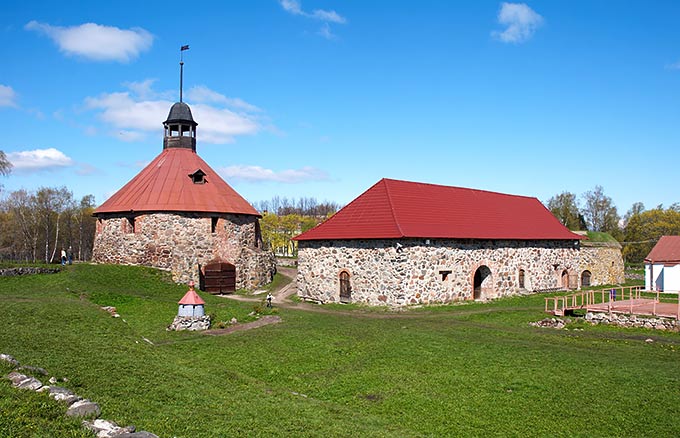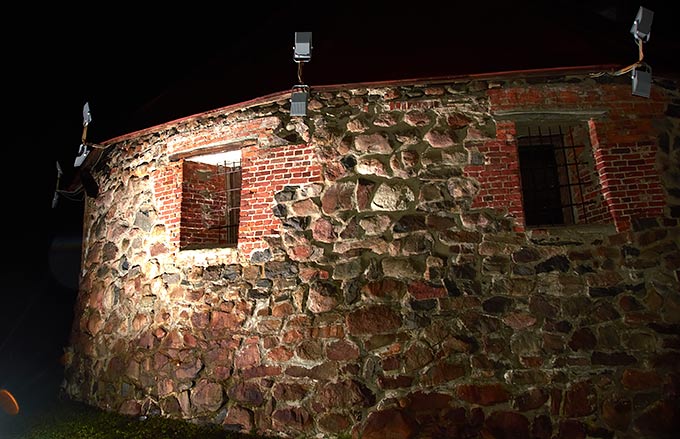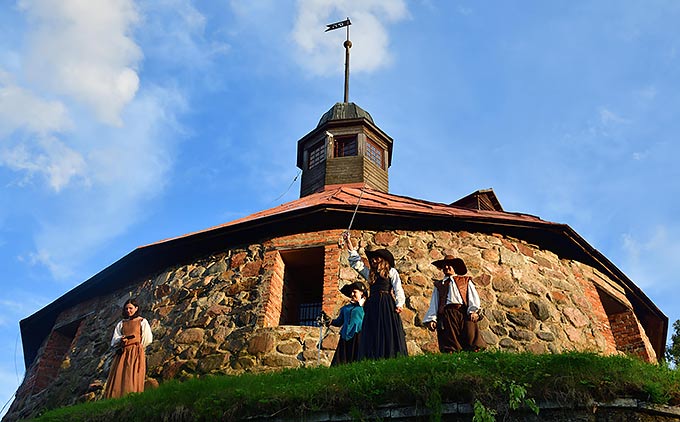Korela - Kexholm Fortress
Exact date of foundation of this fortress is unknown. "Evil sweijski nemcy [Swedes] has set the fortified settlement in Karelia land" - ancient novgorod annals were said. "Rus's Kexholm city was taken by christians [by Swedes] and was escaped from a fire, and a lot of pagans were beaten there and were dispatched to Vyborg Castle" - so the swedes annals were said about this fortress for the first time. It is means that the fortified settlement was there before Swedes appearance.
Both messages were dated to 1295. For the short time the settlement was taken by novgorod forces and Swedes were beaten down and fled. Inhabitants of this lands called this city Karela.
The level of Vuoksa river was much higher in that times, so fortress and posad (fortified settlement on the former Spassky Island where Russian army sanatorium is now) were separated from the continent by channels 50-300 m. width. More convenient place for custom and tax collection was hard to find.
In XIII-XIV century Karela fortress was an advanced post of Novgorod republic and was a subject for frequent attacks of Swedes. In XVI century the fortress was seized by Swedes at last and has got under landscrona authority for more then 100 years. Fortress was renamed to Kexholm . On September 1710 during Northern War it was won back by Peter I.
In XVII century the fortress has lost its military value and was expelled from the military register of fortresses of the Russian Empire. It was used as a political prison from that times. There were many remarkable prisoners here, chief of peasant insurrection Emelka Pugachev's family, members of Decembrist's and Petrashev's movement.
In 1918 Kexholm became a part of Finnish state and referred as Kakisalmi (under terms of Tartu's treatment). From 1940 to 1944 it was part of Karelian-Finnish Soviet Socialistic Republic. In 1944 the city has been included to Leningrad region. In 1948 it has been renamed Priozersk (Lake City in russian).
Impressions
I visited this fortress for the first time in my childhood long time ago in 1972. There were only heaps of cracked bricks and garbage with thick grass upon it at that time. No something interesting.
Now the Round Tower and part of walls and bastions are restored and further construction is being conducted. The restoration is being conducted very roughly, the walls of the Round Tower are made with modern bricks partially, and there are many black marks of coagulated bitumen on the walls under the roof.
Land forts and fortress:
Bip Castle Gatchina Ivangorod Izborsk Kexholm Kirillov Monastery Koporye Novgorod Pechorskiy Monastery Peter&Paul Fortress Porkhov Pskov Schlisselburg Staraya Ladoga Tikhvin Vyborg Hameenlinna Hamina Kastelholm Kymenlinna Lappaenranta Raseborg Castle Savonlinna Tavetti Turku Visby Fredrikstadt Fredriksten Hegra Fort Hoytorp Fort Arensburg Narva Tallinn Antipatris Caesarea Jerusalem Latrun Fort Masada
Sea forts and fortresses:
Alexander Fort Ino Fort Krasnaya Gorka Fort Kronstadt: Kotlin isl. Kronstadt: North Forts Kronstadt: South Forts Trongsund Hanko Svartholm Sveaborg Marstrand Siaro Fort Vaxholm Oscarsborg
Artillery batteries and individual guns:
Coastal Artillery Hemso Fort
Fortified areas and defensive lines:
Karelian Fortified Area (KaUR) KrUR Leningrad Mannerheim Line Nevsky Bridgehead VT Line Harparskog Line Salpa Line Gothland
Russian
S e a r c h All news





